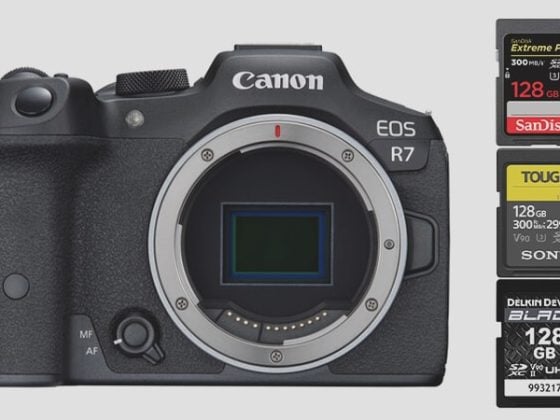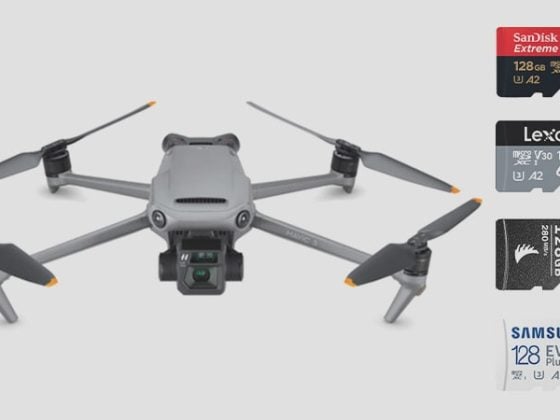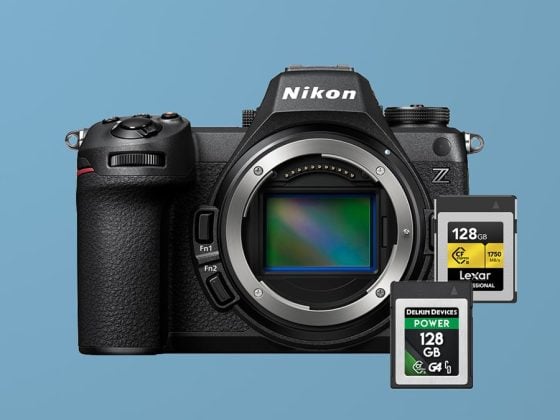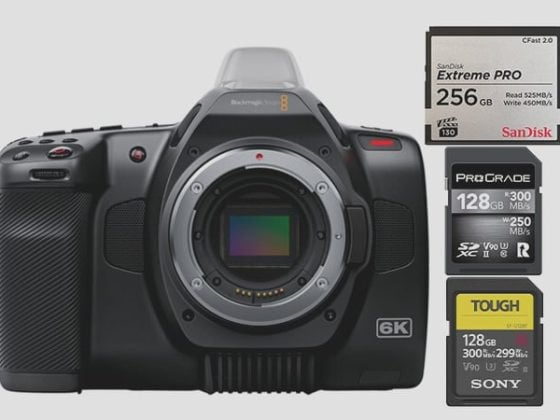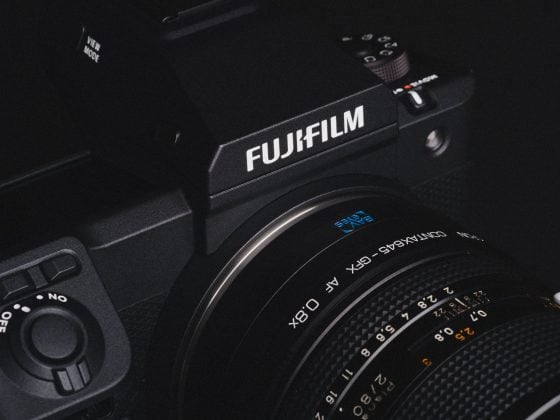This guide will help you find the best memory cards for the Fujifilm X-H2s. There is a lot to discuss and think about, and no perfect configuration exists for any one person’s setup, so this guide should help you find what works best for your situation.
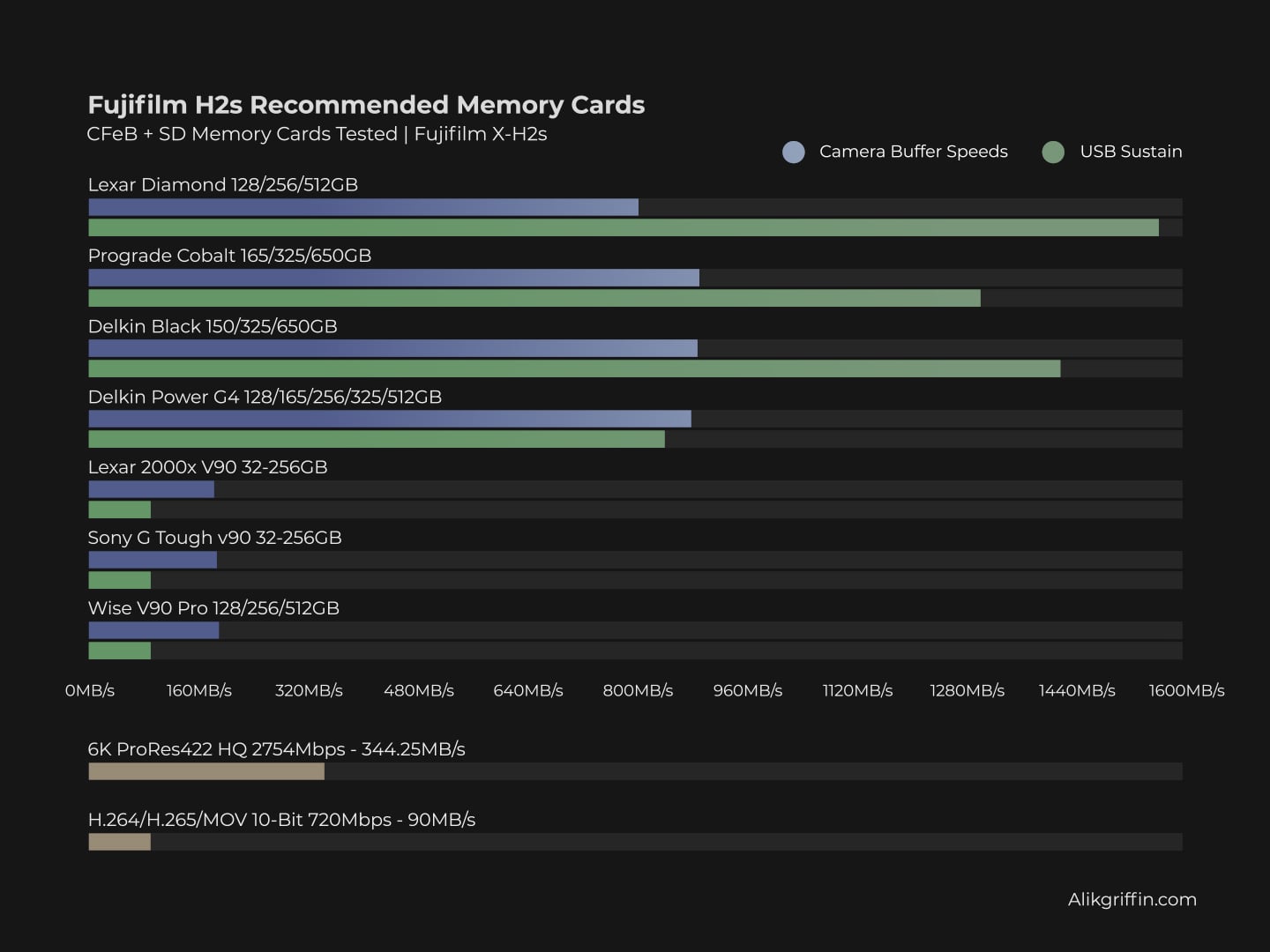
Recommended Memory Cards Fujifilm X-H2s
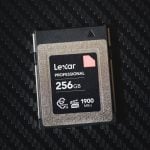
The Fujifilm X-H2s takes two different types of memory cards. CFexpress Type-B and UHS-II cards. CFexpress cards are considerably faster than UHS-II cards, and with the new 64-bit processing of the X-H2s, the camera will fully take advantage of those improved speeds.
- CFexpress Type-B – If you want to do everything possible with your cameras, you’ll need a good CFexpress Type B memory card. These are the fastest cards the camera can use and will allow you to record ProResHQ and clear the buffer very fast.
- SD UHS-II v90 Cards – These cards are much slower than CFexpress cards, and I would only use them for backup or casual photography. However, V60 or V90 cards are suitable for videographers shooting H.264.
For video shooters, there is some important key information you should know.
- Video shooters can use CFexpress Type-B or UHS-II v90 cards if they only use H.265 or H.264 since the highest bitrate of H.265 is 720Mbps or 90MB/s.
- For shooting ProRes, you must use good CFexpress Type-B cards since 6.2k with ProResHQ runs at a bitrate of up to 2754Mbps or 344MB/s. You’ll also need very large cards.
For Photographers bursting with a dual memory card setup with a backup configuration, you’ll want to buy the fastest UHS-II you can buy, but you won’t need the best CFexpress card, since the system will bottleneck to UHS-II speeds in a dual memory card configuration shooting with redundancy.
Here are some great recommendations based on the in-camera benchmarks.
| Memory Cards | Speed Class | Sustained | USB Write | USB Read | Check Price | |||
|---|---|---|---|---|---|---|---|---|
| CFExpress Type-B | Hide | Hide | Hide | Hide | ||||
| Lexar Diamond 128/256/512GB | CFx-B | 1600 | 1621 | 1700 | https://geni.us/onRoZ | https://www.amazon.com/Lexar-Diamond-Professional-CFexpress-Type-B/dp/B0B7KCWX5N?crid=225T0KO6ZPJ80&dib=eyJ2IjoiMSJ9.L-qV4jBTGcik3zp8vuwkO69eEhmYpmjVi1jyLp7SCm8eklJ1705TynBa9lXIKfiWeGbu28bXjXIQ7WtbW_jqknIVgGMIzRce0tXobxQnj-cIm7G4n-CGKpgzNi6j9UCHncN_MM66sfiyi4WLuE3MMBN9FDC33yMjxHprhRkH6ysXAu-j-NWnG35pelVPM7zz9Xd58PD2u3eUihl2aUkQQnNWv-UYZO0UUKTQnrVDyOU.6dgG3VJ9v_bL1oNpT5Nts5RJzCFBSEDHpvEE0B9vms0&dib_tag=se&keywords=lexar+diamond+256gb&qid=1716081865&sprefix=lexar+diamond+256g%2Caps%2C345&sr=8-3&geniuslink=true&linkCode=ll1&tag=memcards00-20&linkId=76046f376e02350084121a859c7aec4d&language=en_US&ref_=as_li_ss_tl | https://bhpho.to/3KhHlfA | Amazon / B&H |
| Prograde Cobalt 165/325/650GB CF2.0 | CFx-B | 1400 | 1429 | 1029 | https://geni.us/vOF2na | https://www.amazon.com/dp/B0B5G573ZV?_encoding=UTF8&psc=1&linkCode=ll1&tag=memcards00-20&linkId=a9e21899762c18e26fbe88e510586f04&language=en_US&ref_=as_li_ss_tl | https://bhpho.to/3uOI15I | Amazon / B&H |
| Delkin Black G4 325GB | CFx-B | 1450 | 1396 | 1538 | https://geni.us/HxiA | https://bhpho.to/4aC9GYW | B&H | |
| Delkin Power G4 128/165/256/325/512GB | CFx-B | 805 | 920 | 1226 | https://geni.us/ZuSsl2l | https://www.amazon.com/1-3TB-Power-CFexpress-Memory-Cards/dp/B0C6QF7R3S?crid=3LOZ9IZ3TCKW1&dib=eyJ2IjoiMSJ9.cBksN6Ly617KqFgcjHu5VlGTjty2XGWZU5YWfBC00f3GjHj071QN20LucGBJIEps.akNsb3FfDZ_hptPC9d8Ug2Awmpe-Uzowhg24DeHzF_o&dib_tag=se&keywords=Delkin%2BPower%2BG4&qid=1716598841&sprefix=delkin%2Bpower%2Bg4%2B1tb%2Caps%2C358&sr=8-3&th=1&linkCode=ll1&tag=memcards00-20&linkId=22ac2e5acc26eddfad86b0d583698959&language=en_US&ref_=as_li_ss_tl | https://bhpho.to/43JzVK1 | Amazon / B&H |
| SD UHS-II V90 | UHS-II | Hide | Hide | Hide | Hide | |||
| Lexar 2000x V90 32-256GB | UHS-II | 90 | 228 | 256 | https://geni.us/wV6t67K | https://amzn.to/4bP7Wwm | https://bhpho.to/3QebQFE | Amazon / B&H |
| Sony G Tough v90 32-256GB | UHS-II | 90 | 258 | 296 | https://geni.us/BGrBOD | https://amzn.to/4bPP28H | https://bhpho.to/3CjcUCp | Amazon / B&H |
| Wise V90 Pro 128/256/512GB | UHS-II | 90 | 256 | 275 | https://geni.us/Ugf9 | https://bhpho.to/3CGhomP | B&H |
Fujifilm X-H2s Memory Card Benchmarks | Speed & Buffer Tests
Benchmarks are taken by running a continuous burst with each card in the camera, then comparing data written to the time it took to clear the buffer. This is done several times, and the best time is taken.
*I kept having an issue with this camera where my UHS-II cards did not make firm contact with both rows of pins, which often ran at UHS-I speeds. Sometimes, this is just an initialization issue. Try turning off the camera, taking out the battery, taking out the memory card, putting the battery in, and then the memory card in; this often fixes the issues.
Compare the USB Read and Write stats with the SD Memory Card Benchmarks and the CFexpress Type B Benchmarks.
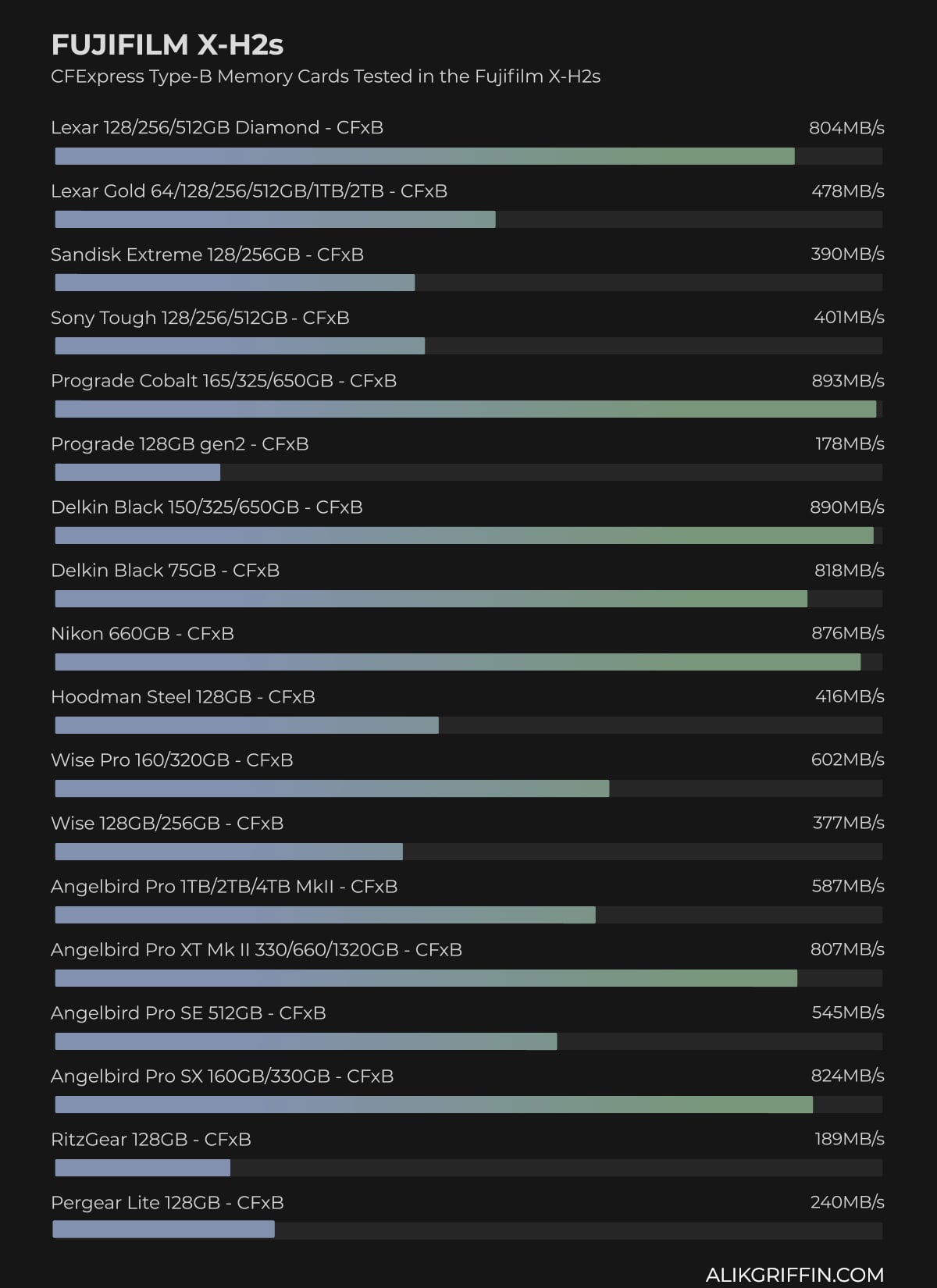
Here are the tests with the SD UHS-II cards. Be careful with these cards; there were many compatibility issues. I’m not sure if it was the cards that the camera didn’t like or if the camera just had a card slot.

Further Compatibility Information
Fujifilm has also officially tested and recommended memory cards. I share the same cards above. Official Fujifilm X-H2s Memory Card Compatibility Chart,
For Lexar cards, stick with 2000x for V90 speeds or 1800x v60 speeds for the X-H2s.
VGP 400 Rating – Like the U3, V60, and V90, CFexpress cards now offer a VGP 400 rating – Look for the little clapper board with the 400 logo.
VGP 400 certification guarantees that the card will, no matter what, give you 400MB/s as a minimum write speed, which is fairly critical when shooting at the maximum bitrate of the X-H2s, and you don’t want to run into buffer issues.
CFexpress Type B cards throttle their speeds a lot to combat heat build-up, and other factors like fragmentation can also slow down write speeds. If you don’t have a VGP 400 card, never delete clips to avoid fragmentation.
More Fujifilm X-H2s Specs
| Sensor: APS-C 26.1MP X-Trans Stacked BSI Processor: X-Processor 5 Continuous Shoot: 15fps Mechanical, 40fps Electronic Est. Buffer Size: 5GB RAW Shots To Fill Buffer: 1000 Frames (Raw) @ 15fps / 140 Frames RAW @ 40fps Max Memory Card Capacity: Any size, no limit. 6.2k Datarate: 360 to 720 Mbps | 45MB/s to 90MB/s 4k Datarate: 360 to 720 Mbps| 45MB/s to 90MB/s |
See my recommended Fujifilm X-H2s Accessories.
Fujifilm X-H2s Bitrates & Record Times
Remember that people often test and show that H.265 with good compression looks better than Prores.
| ProRes | Megabits | Megabytes | 128GB | 256GB | 512GB |
| 6.2k ProRes 422 HQ 4:2:2 10-Bit | 2754Mbps | 344.25MB/s | 6min | 12min | 25min |
| 4k ProRes 422 HQ 4:2:2 10-Bit | 1877Mbps | 234.62MB/s | 9min | 18min | 36min |
| 2k ProRes 422 HQ 4:2:2 10-Bit | 440Mbps | 55MB/s | 39min | 78min | 155min |
| 6.2k ProRes 422 4:2:2 10-Bit | 1840Mbps | 230MB/s | 9min | 19min | 37min |
| 4k ProRes 422 4:2:2 10-Bit | 1254Mbps | 156.75MB/s | 14min | 27min | 54min |
| 2k ProRes 422 4:2:2 10-Bit | 294Mbps | 36.75MB/s | 58min | 116min | 232min |
| 6.2k ProRes 422LT 4:2:2 10-Bit | 1277Mbps | 159.62MB/s | 13min | 27min | 53min |
| 4k ProRes 422LT 4:2:2 10-Bit | 870Mbps | 108.75MB/s | 20min | 39min | 78min |
| 2k ProRes 422LT 4:2:2 10-Bit | 204Mbps | 25.5MB/s | 84min | 167min | 335min |
| H.265 | |||||
| 6.2k H.265 4:2:2 10-Bit | 360 – 720Mbps | 45-90MB/s | 47 – 24min | 95 – 47min | 190 – 95min |
| 4k H.265 4:2:2 10-Bit | — | — | — | — | — |
| 2k H.265 4:2:2 10-Bit | — | — | — | — | — |
| 6.2k H.265 4:2:0 10-Bit | — | — | — | — | — |
| 4k H.265 4:2:0 10-Bit | — | — | — | — | — |
| 2k H.265 4:2:0 10-Bit | — | — | — | — | — |
Using Memory Cards For Backup
Photographers—To run a dual memory card setup with backup, you will need both CFexpress and UHS-II cards. A slower UHS-II card in slot two will bottleneck the performance to the speed of the UHS-II SD card.
Shooting with a dual memory card configuration won’t require buying the fastest CFexpress cards, but you should buy the fastest UHS-II SD cards. CFexpress and UHS-II cards are roughly priced similarly, so it’s not a huge loss either way.
When shooting backup, you may have to run just JPG to the UHS-II cards to not impact performance as much since JPGs are smaller. However, JPGs are often harder on the processor and aren’t much smaller than Fujifilm RAW files. So, you’ll still take a hit in buffer-clearing speeds when bursting, especially if you have effects like clarity turned on – so be careful here and do plenty of testing, especially if you use a lot of the film simulator options.
Videographers—If you want to shoot Prores, you cannot shoot video redundantly since the second card slot does not support those speeds. However, if you need redundancy with the X-H2s while shooting Prores, you might be able to record internally simultaneously as recording externally to a Ninja recorder.
| **This website contains affiliate links. We will earn a small commission on purchases made through these links. Some of the links used in these articles will direct you to Amazon. As an Amazon Associate, I earn from qualifying purchases. |

